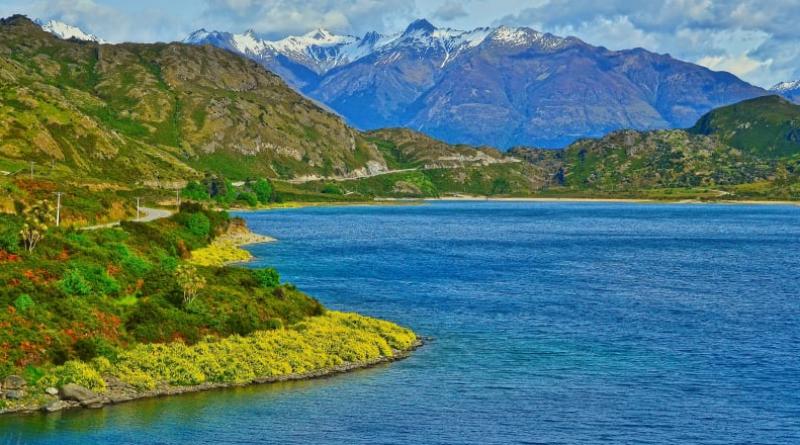Storing energy for a transitioning grid.

A key factor in boosting New Zealand’s renewable energy contribution to the electricity grid will be the storage options we pursue. Professor Alan Brent explains what they are – and where the big opportunities lie.
The Government target for renewable energy resources’ contribution to the electricity grid may be debated, but all the scenario modelling outcomes now being presented suggest at least 90 percent within the next decade and around 95 percent within the next two to three.
This is in light of an expected growth in electricity demand of anywhere between 20 and 45 percent, with all the uncertainties associated with projected population and economic growth, and technology developments. These developments include potential electricity intensification of our residential, commercial, industrial and transportation sectors, and the drive for sustainability transitions in general.
The International Energy Agency (IEA), in its country review of 2017, highlighted the importance of storage considerations given our country’s geographic isolation, the limitations of our hydro capacity with climate variations, and the increasing contribution of intermittent wind. In terms of the latter, the Ministry of Business, Innovation and Employment (MBIE) estimates returns on investment in wind will diminish when wind penetration is around 25 percent. It is currently between 5 and 7 percent.
So what are our storage options to facilitate this transition to an even higher renewables-based grid? Some of the opportunities are due to global trends, but others are New Zealand-specific and there for the taking.
Battery storage
In its Energy Storage Outlook 2019 released at the end of July, Bloomberg New Energy Finance predicts a 122-fold boom in stationary energy storage over the next two decades. We’ve already seen an 85 percent reduction in the cost of lithium-ion batteries from 2010 to 2018 and they are likely to further halve in cost by 2030 due to increasing demand for electric vehicles and stationary applications. These include energy shifting (moving in time the dispatch of electricity to the grid, often from when there is excess wind generation), dealing with spikes in demand for the bulk power system, and distributed, behind-the-meter customers looking to save on energy bills by managing their individual loads.
This range of applications across the electricity value chain is echoed in a Transpower document of 2017 and we’ve subsequently seen uptake in New Zealand, from the Tesla Powerpack 2 grid-scale battery in South Auckland to the mainstreaming of Tesla Powerwall (and other) products in households and commercial buildings.
Many research efforts are ongoing, particularly through the MacDiarmid Institute for Advanced Materials and Nanotechnology, to develop this technology platform further and position New Zealand in the global marketplace.
Thermal energy storage
Lesser known, and hereto overlooked in New Zealand, thermal energy storage is even cheaper when compared with conventional, electro-chemical batteries. It is typically associated with high temperature thermal generation facilities, but advances have been made, with the first commercial, smaller-scale implementation this year, most noticeably in Australia. The energy is stored, in phase-change materials, at more than 12 times the density of a lead acid battery, which can then be used for process heat where electrification is not feasible or can be extracted by a thermic generator to provide electricity when and where it is needed.
This is certainly an option to extend our geothermal resources to meet the variable demands of the electricity market and needs further investigation and demonstration locally, similar to what the National Renewable Energy Laboratory has undertaken in the United States.
Biomass storage
Undervalued in many ways, biomass is (potentially) another low-cost storage option. The Biofuels Roadmap, which the Crown research institute Scion released in 2018, shows some of the options from certain feedstocks, but the utilisation across different scales can be enormous, from replacing or augmenting large-scale thermal generation to onsite combined heat and power, with Fonterra moving in the right direction, to biogas digestors at water treatment plants and for on-farm and community usage.
For the period between 2016 and 2018, the International Renewable Energy Agency reported earlier this year an installed, stable (or base) capacity of 77 megawatts from solid biomass and a reasonably stable 41MW from biogas for New Zealand. A comparison with the total installed capacity of around 850MW in Australia, and considering our agriculture-intensive economy, suggests we can move more aggressively into this space.
Pumped storage
A pumped storage hydropower scheme between the Onslow-Manorburn basin and Lake Roxburgh in central Otago, with realisable potential energy in excess of 10,000 gigawatt hours to buffer the country’s electricity system during a dry year and address the intermittency of wind, has been suggested for nearly two decades and the Government is now making some headway.
If the price tag of around $4 billion is true, the project entirely makes sense when compared with the figures the US Department of Energy released earlier this year, with this project being at the lower end of its total cost range of between $2,550 and $4,800 a kilowatt. And it would make this large ‘battery’ more competitive than any of the other storage options, especially for longer-term storage at the scale we need. To extend the project even further, a floating solar photovoltaic farm on the lake can be considered. The World Bank released a report in 2018 highlighting the cost-benefit of such systems, especially where hydropower can be augmented. And an analysis of the solar resource at the basin indicates this is certainly an option.
Hydrogen storage
Much has been said about hydrogen this year. Although the Government is pushing this agenda, there remains much scepticism relating to costs. However, a report of the global Hydrogen Council in 2017 shows the promise of hydrogen for long-term seasonal storage, and its production could flatten the load on the national grid to some extent. The H2@Scale initiative of the US Department of Energy earlier this year emphasised the potential of addressing the transition of the transport sector, especially for heavy, long-haul transportation and rail where electrification is not feasible. And augmenting the existing gas thermal fleet is an option, similar to developments in the Netherlands and Japan. A more in-depth systems analysis is required for this country.
Other storage options
Innovations around mechanical storage, specifically fly wheels, super capacitors and others, are ongoing internationally and in New Zealand. These, with the well-established technology platforms briefly discussed here, will together pave the way for a just transition of our energy system.
*Professor Alan Brent is Chair in Sustainable Energy Systems in the School of Engineering and Computer Science at Victoria University of Wellington.
2 September 2019
ideasroom.




